Dorothy was totally onto something when she clicked her heels together and said “there’s no place like home”. And while we think that the homey vibe you create in your safe haven is way important, we also know how good it feels to be in an earth-friendly environment, too. Meaning, lighting some candles and adding some decorative pillows to your living room might look and feel great – but going the extra mile to create a space that is also kind to the planet is on a *whole* other level. If you’re ready to make the switch, you’re in luck babe. The tips you need are just a scroll away in this Beginner’s Guide to Making Your Home More Eco-Friendly.
Ditch those toxic household products once and for all.
Whether it’s letting go of a bad habit, starting a new diet, or changing any other part of your daily routine that needs evolving – you can always start small, sis. In fact, making easy changes is often the best way to move towards bigger and better things without crashing and burning. The same principles apply to making your home more eco-friendly.
Ditching the toxic cleaning products you use on a regular basis is a simple way to make your home more eco-friendly. Since these guys are packed with harmful chemicals, they can be highly detrimental to the planet and to your health. In fact, many ingredients in everyday household cleaners have been linked to eye and throat irritation, headaches, and even cancer.

Additionally, when it comes to the planet, cleaning products unfortunately do more harm than good. Between water pollution, air pollution, and the waste they create – there are so many reasons why you should ditch these guys for good. All of the chemicals that go down your drain are washed into rivers and other bodies of water which is not so cute for wildlife. Moreover, those aerosol or spritz form cleaning products also affect your indoor air quality. And when it comes to that waste we mentioned, well, think of it this way babe: we have yet to find a toxic cleaning product that didn’t come wrapped up in plastic. Catch our drift? Cool. Moving on.
What should I clean my home with to make it more eco-friendly?
Now that we’re at the point in this Beginner’s Guide to Making Your Home More Eco-Friendly blog where we’ve completely turned you off of toxic cleaning products, here’s your solution. Make your own natural and safe household cleaners!
If you’re not a big DIY girl, don’t sweat it. Making your own concoctions of effective cleaning solutions is easy peasy. Check out these easy mixes below to make your at-home cleaning routine way more eco-friendly.
Make the switch to eco-friendly toilet paper and never ever use disposable plates or cutlery.
This might be one tip you weren’t expecting. But babe, think about how often and how much of these items you use on a daily basis.
When it comes to toilet paper, reach for eco-friendly options. This may seem futile at first but can actually make a *huge* impact on your carbon footprint in the end. Choosing toilet paper that is 100% recycled or made of super degradable bamboo is just another way you can make your home that much kinder to the planet.

While we’re on this topic, we have to touch on the use of disposable plates and/or cutlery. Not only is it not cute aesthetically, it is totally unattractive to the environment. Avoiding garbage and plastic waste that is not biodegradable is a sure shot to getting you well on your way to being an eco-friendly goddess. We know, we know – dishes suck. But babe, take one for the team. Or should we say the planet, in this case?
Invest in household products that are biodegradable.
Since that last tip in our Beginner’s Guide to Making Your Home More Eco-Friendly was the perfect segway into biodegradable gems, let’s broach this next golden piece of advice right here, right now.
From disinfecting spray to dish soap, you can choose to use household products that are highly biodegradable. And as we mentioned above, opting for biodegradable toilet paper and paper towels is another way to reduce pollution and protect the planet, too.
Want more tea on selecting the best biodegradable cleaning products? Click here, girlfriend.
Light up your home with energy efficient LED lights!
Making the switch to LED lightbulbs isn’t only better for the planet. These babies last way longer than traditional lightbulbs and are therefore more economical for your wallet as well. Not to mention, who the heck enjoys changing lightbulbs in the first place? Not us, honey.
The benefits of switching to the LED vibe are numerous. When it comes to protecting the planet, here’s what they can do and how they can contribute to making your home more eco-friendly:
- LED lights draw less power than traditional lighting and are 80% more efficient.
- Since LED lights are brighter and distribute light more evenly, you don’t need to use as much light as you would with those old bulbs.
- Did you know that traditional bulbs and fluorescent lighting contain toxic elements like mercury? Yup, we’re not kidding. LED lights though? They contain none.
And while we’re on the topic of lighting… let that sun shine through to use less electricity.

This one might seem like a no brainer, babe. But let that natural light shine through your windows more often to make your home feel better and for it to be eco-friendlier. Your mood will improve, your electricity bill will make you cringe a little less, and the planet will thank you.
Reduce the amount of water waste in your home.
This next piece of advice in our Beginner’s Guide to Making Your Home More Eco-Friendly is *super* crucial. And, we don’t think it’s talked about quite enough. Diminishing water waste is one of the easiest ways you can make your home eco-friendlier and reduce environmental harms.
Here’s the thing, babe. While the demand for h2o continues to increase, wasting it means that we have to pull out additional water from aquifers and groundwater supplies. The issue here is that the water regeneration rate is lower than the extraction rate, making this solution to getting more water super unsustainable.

And although it may seem like h2o magically flows out of your tap, in reality it takes a massive amount of time, energy, and mula to filter it and make it drinkable. So every time you leave that faucet running for nothing, you’re wasting the energy-intensive practice of filtration. Yeah, it’s that serious, sis.
To make your home eco-friendlier, step up your thermostat’s game!
We know how popular home technology has gotten. I mean, who would have thought we’d ever be able to control the temperature of our homes from our cellphones? But here we are, and there is a definite upside to these new gadgets.

Investing in a smart thermostat means that you can save energy by simply adjusting the temperature in your space while you’re away. What’s more, some systems even track the weather and self-adjust based on the forecast so that you don’t have to. Crazy cool, right? We sure think so.
Make sure your home is equipped with a recycling bin and a compost bin.
You’d be stunned at the amount of babes out there who simply don’t own a recycling or compost bin. It’s 2022, and we think every home (eco-friendly vibes or not) should have them! You might be thinking this sounds obvious, but humor us here. Let’s explore why.
- Currently, over 50% of the things we throw in the garbage are recyclable. Ouch. That’s one stat we aren’t stoked to share with you, babe.
- Moreover, food waste that *could* be composted is also thrown into the garbage way too often. And if you haven’t heard of the negative effects of food waste yet, we definitely suggest you click here.
- The excessive amount of garbage we create has a direct impact on greenhouse gas emissions and waste that ends up in landfills. Meaning, any amount of recycling and composting can help reduce these negative effects.

We won’t bore you to death here babe, you get the picture. Please, please, please invest in a recycling bin and a compost bin to make your home just a little eco-friendlier, pronto.
Want your eco-friendly home to even feel greener? Add some plants to your décor!
To wrap up this Beginner’s Guide to Making Your Home More Eco-Friendly, we had to leave you with a fun tip that isn’t only good for you and the planet. In fact, it will make your whole space feel warmer, cozier, and healthier!
Adding plants to your home won’t only add a beautiful, zen vibe to your space. It will also help filter your air naturally by producing oxygen, getting rid of toxins, and by increasing humidity levels. I mean, if that doesn’t sound dreamy, we don’t know what does!

You’re killing the eco-friendly home game, babe.
We hope you enjoyed this Beginner’s Guide to Making Your Home More Eco-Friendly and that you pass along some of these tips to all of the babes in your life. Making small shifts in your everyday routine doesn’t have to be complicated. Plus, it can make a huge impact on how we care for this beautiful planet of ours. We see you, saving the world one bamboo toilet paper roll at a time, gorgeous.
Carey <3









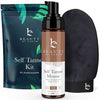

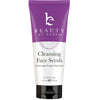


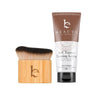











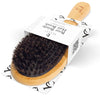
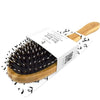
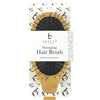
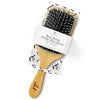
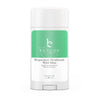



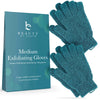
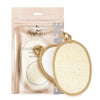


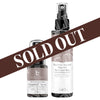





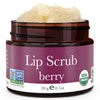
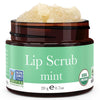
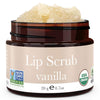





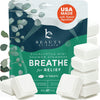
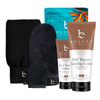



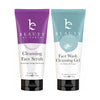
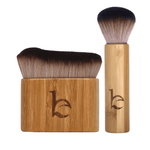
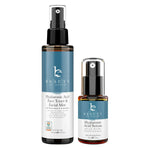

















join the conversation